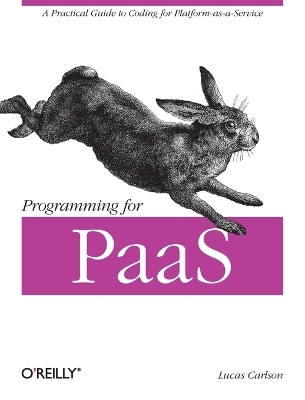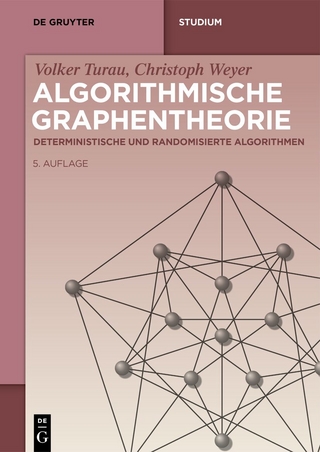
Programming for PaaS
O'Reilly Media (Verlag)
978-1-4493-3490-1 (ISBN)
Whether you’re an entrepreneur or part of a large enterprise development team, this book shows you how PaaS can help you focus on innovative applications, rather than spend your time worrying about technical operations.
- Track the cloud’s evolution from IaaS and DevOps to PaaS
- Learn how PaaS combines the simplicity of shared web hosting with the control of dedicated hosting
- Explore the benefits of both portable and non-portable PaaS options
- Apply best practices for moving legacy apps to PaaS—and understand the challenges involved
- Write new applications for PaaS from scratch with RESTful meta-services
- Use PaaS to build mobile apps with backend services that scale
- Examine the core services that each major provider currently offers
- Learn the situations in which PaaS might not be advantageous
Lucas Carlson founded AppFog, a PaaS company that leveraged Cloud Foundry and was acquired by CenturyLink. Lucas has been a professional developer for 20 years and specializes in Ruby on Rails development. Lucas has authored »Programming for PaaS« and the »Ruby Cookbook« and has written half a dozen libraries in various programming languages and contributed to many others, including Rails and RedCloth. He maintains a personal website at rufy.com.
Chapter 1 The Cloud for Developers
The Developer’s Plight
What the Cloud Has Done for Innovation
The Cloud: A Brief History for Programmers
The Core of the Cloud
Managed Platforms versus Productized Platforms
The Cloud’s Promise (or Hype)
The Cloud in Five Years
The Promise Fulfilled
Chapter 2 What Is PaaS?
Conjuring a Website
Early Options for Developers
PaaS: The Best of Both Worlds
PaaS: A Vital Tool for Modern Apps
Conjuring Confidence
Chapter 3 Types of PaaS
Non-Portable: Following a Template
Portable: No Heavy Lifting Required
Summary: Where Do You Want to Live?
Dealing with Legacy and Greenfield Apps
Tapping Into Services
Moving Toward Open Standards
Chapter 4 Moving Legacy Apps to PaaS
Initial Considerations
Overview
Asset Hosting
Session Management
Caching
Asynchronous Processing
SQL
NoSQL
Miscellaneous Gotchas
Chapter 5 Writing New Apps for PaaS
Breaking Down the Monolith
Leveraging APIs for Mobile Development
The Emergence of JSON and REST
Consuming RESTful Metaservices
The Unique Contribution of PaaS
The Effect of Moore’s Law
Chapter 6 Mobile Apps on PaaS
A Brief History of Mobile App Development
The Apps of the Future
Data Structures
Consuming Metaservices in Mobile Clients
How PaaS Makes Mobile Backend Development Easier
Serving a Large Audience
Chapter 7 A Look at Core Services
Non-PaaS Core Services
Evaluating PaaS for Services
Saving Time with Managed Databases and PaaS
Caches and PaaS: Look for Redundancy
Solving the Challenges of Email
The Importance of Monitoring
Load Testing
Planning an Upgrade Path
Chapter 8 Why Not PaaS?
Public Cloud versus Private Cloud
How to Choose: Small- and Medium-Sized Businesses
How to Choose: Enterprise Businesses
The Limitations of PaaS
Encountering Resistance
Putting the Limitations in Perspective
Chapter 9 The Future of PaaS
The Influence of OpenStack
Keeping Your Development Options Open
Outages: Your Biggest Problem
Regaining Control Through Open Source
Final Thoughts
Chapter 10 Resources
PaaS Providers
IaaS Providers
Managed Services
Migrating Legacy Apps to PaaS
Greenfield PaaS App Development
Colophon
| Erscheint lt. Verlag | 6.9.2013 |
|---|---|
| Zusatzinfo | black & white illustrations |
| Verlagsort | Sebastopol |
| Sprache | englisch |
| Maße | 178 x 233 mm |
| Gewicht | 240 g |
| Einbandart | kartoniert |
| Themenwelt | Mathematik / Informatik ► Informatik ► Software Entwicklung |
| Mathematik / Informatik ► Informatik ► Web / Internet | |
| ISBN-10 | 1-4493-3490-3 / 1449334903 |
| ISBN-13 | 978-1-4493-3490-1 / 9781449334901 |
| Zustand | Neuware |
| Haben Sie eine Frage zum Produkt? |
aus dem Bereich


